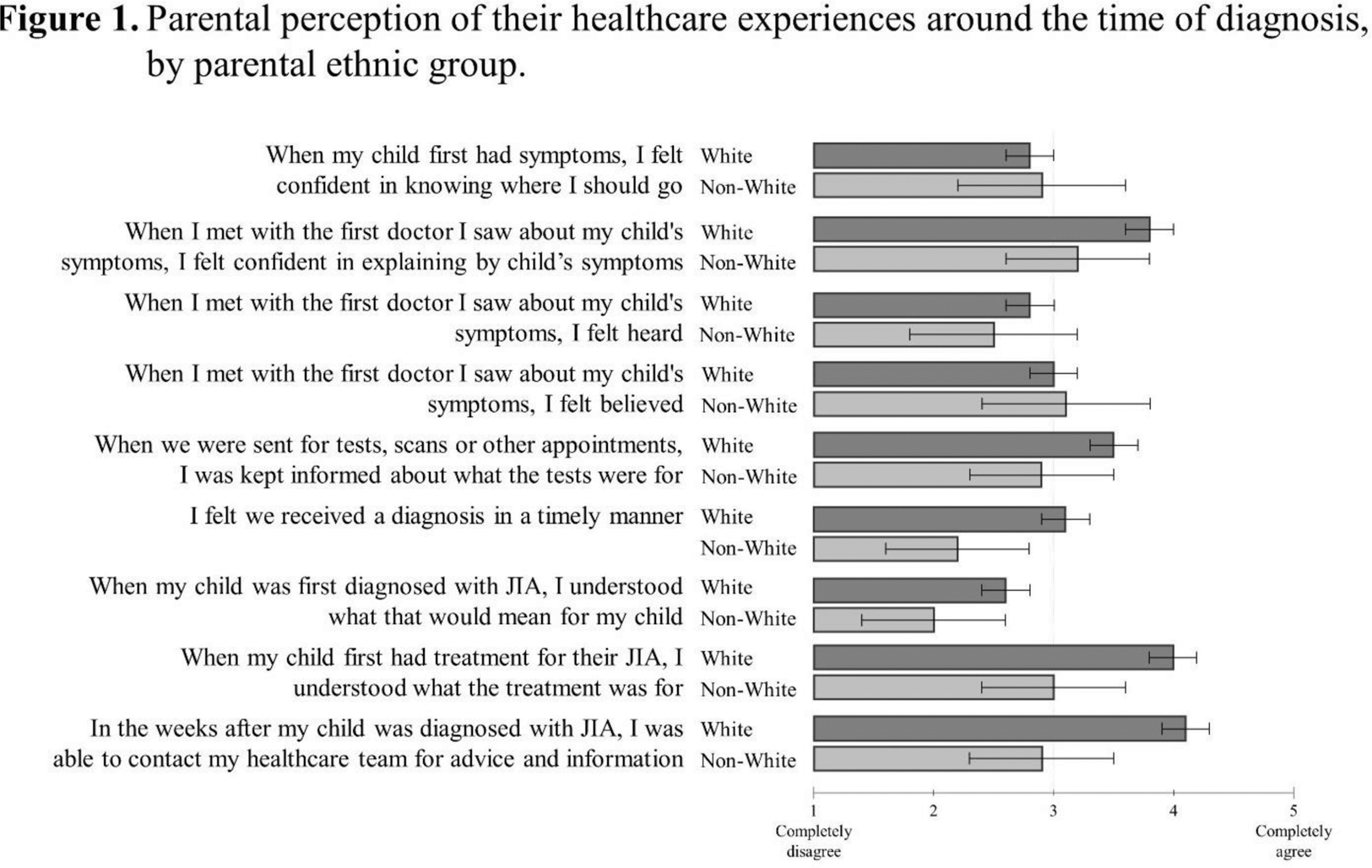

Background: Juvenile idiopathic arthritis (JIA) is a heterogenous group of autoimmune disorders characterised by chronic joint inflammation, affecting children and young people (CYP) under the age of 16. It has been suggested that the incidence and prevalence of JIA differs between different ethnic groups [1]. In other chronic diseases the perceptions and experiences of accessing healthcare and obtaining a diagnosis also differs between people with different ethnicities [2].
Objectives: To investigate the perceptions and experiences of parents of CYP around the time of diagnosis of JIA, comparing those of parents of different ethnic groups.
Methods: Parents/carers (aged 18+) of children with a diagnosis of JIA in the UK were invited to complete an online survey, which had been co-developed with patient partner involvement (PPI) and circulated through patient networks and via social media by a national patient organization in the UK.
Questions included time from symptom onset to diagnosis, first healthcare professional contact, number of visits to healthcare services prior to receiving a diagnosis, and their perception of aspects of their healthcare around the time of diagnosis with JIA, alongside contextual and demographic details. Subjective questions were asked using a 5 point Likert scale. Descriptive statistics were used to summarize the data.
Results: Between July and September 2023, a total of 225 complete responses were received. Overall 154 (68%) of children represented in the survey were female; 197 (87%) were White. Median time since diagnosis was 3 years (IQR 1, 8).
There were a number of differences in reported experiences between ethnic group (Table 1), with Non-White respondents having an older age of symptom onset (median age 4 vs 3 for White CYP), attending more visits to healthcare services prior to a diagnosis due to JIA symptoms (median number of visits 12.5 vs 5.0), and a longer time to diagnosis from symptom onset (less than six months for 10.7% of Non-White vs 63.5% of White CYP).
In terms of parental perception of their healthcare around the time of diagnosis (Figure 2), parents from both groups tended to not agree that they knew what a diagnosis for JIA would mean for their child. In addition, Non-White respondents were less likely to feel they received a diagnosis in a timely manner (mean 2.2 on 5-point Likert scale vs 3.1 for White CYP); were less likely to agree that they understood what treatment was for (3.0 vs 4.0); and were less likely to agree they were able to contact their healthcare team for advice and information (2.9 vs 4.1).


Conclusion: This study has highlighted potential differences between ethnic groups in the perceptions and experiences around the time of a diagnosis of JIA. These differences could impact long-term outcomes of their disease and warrant further investigation.
REFERENCES: [1] Beesley R, Hyrich K, Humphreys J. POS0745 The incidence and prevalence of Juvenile Idiopathic Arthritis differs between ethnic groups in England. Annals of the Rheumatic Diseases 2023; 82: 663.
[2] Mann JR, Zhang Y, McDermott S, Wang Y, Cai B, Conway KM, et al. Racial and Ethnic Differences in Timing of Diagnosis and Clinical Services Received in Duchenne Muscular Dystrophy. Neuroepidemiology. 2023;57(2):90-9.
Acknowledgements: NIL.
Disclosure of Interests: None declared.